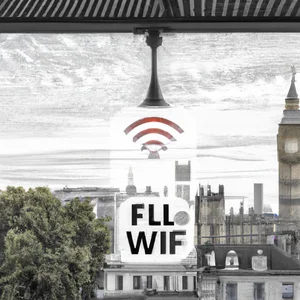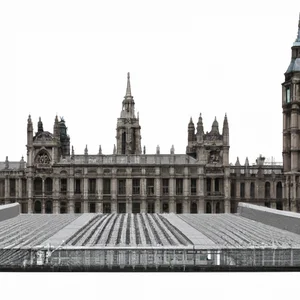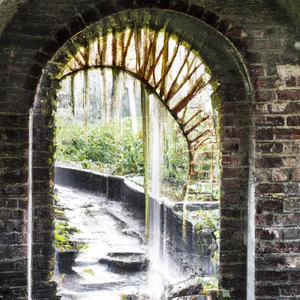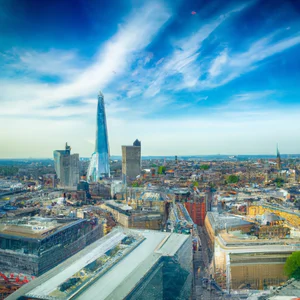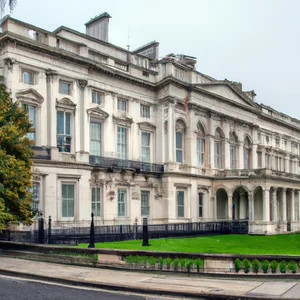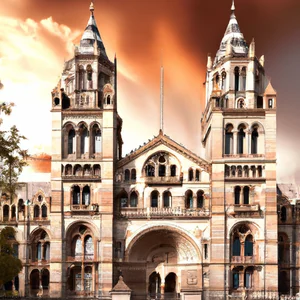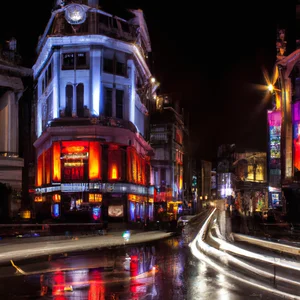Book your experience
Lloyd's Building: Richard Rogers' high-tech architecture in the heart of the City
The Lloyd’s Building really is a one-of-a-kind piece, isn’t it? It’s like Richard Rogers decided to put some technology and design together in a way that makes you say “wow” every time you look at it. Imagine yourself in the middle of the City of London, with all that hustle and bustle around, and then this skyscraper appears in front of you that looks like a robot, with pipes and metal structures sticking out everywhere. It’s like a work of art walking between skyscrapers!
When I first went there, I remember thinking, “What the hell is this?!” It’s a bit like they put a technology factory in the middle of an art museum. The most striking thing, in my opinion, is how everything is exposed to the outside. I mean, buildings usually have hidden pipes, right? But not here, here everything is in plain sight. It’s a bit as if Lloyd’s wanted to say: “Hey, look how cutting edge we are!”.
And, I must say, I find a certain poetry in this. The structure almost seems to dance with the rest of the city, yet it is so different from everything else. Of course, not everyone likes this high-tech style; some find it a bit cold and impersonal, but to me it makes me think of the future. It’s like Richards wanted to challenge convention, and I’ve always been for challenges, I mean, who doesn’t love a bit of rebellion, right?
To conclude, the Lloyd’s Building is more than just a skyscraper: it is a symbol that makes you think about how technology and architecture can mix. It may not be the building of your dreams, but it certainly leaves an impression on you. And who knows, maybe there will be a day when we get used to these high-tech wonders and consider them normal. But for now, every time I pass by it, I always think: “Man, what a sight!”.
The High-Tech Architecture Revolution in London
A personal experience
I still remember my first encounter with the Lloyd’s Building: an imposing structure that seems to defy the laws of gravity and traditional architecture. As I approached, the external pipes and escalators visible from the outside created an almost futuristic atmosphere. It was as if I had crossed the threshold of another dimension, where design and functionality intertwine in a bold embrace. That day, walking around this high-tech wonder designed by Richard Rogers, I realized how profoundly architecture can influence not only a city’s skyline, but also its spirit.
An architecture that changed London
The Lloyd’s Building is emblematic of a true revolution in high-tech architecture, a movement that took hold in the 1970s and 1980s. With its bold lines and exposed structure, Lloyd’s ushered in a new way of thinking about buildings, breaking with tradition and inviting viewers to explore innovation. This approach has had a significant impact not only on London, but also globally, inspiring generations of architects and designers.
An insider tip
A little-known tip: if you want to get the full Lloyd’s Building experience, try visiting on a sunny day. The natural light that filters through its interior spaces accentuates the materials and shapes, creating a unique atmosphere. Also, don’t forget to ask staff members about lesser-known architectural details; they are often happy to share anecdotes and curiosities.
The cultural impact
The Lloyd’s Building is not just an architectural work; it is a symbol of modernity and innovation. It has helped transform the City of London into a global financial centre, attracting investment and talent from across the globe. Its presence also stimulated a dialogue about the future of architecture and sustainability, asking fundamental questions about how buildings can better integrate with the urban environment.
Sustainability and responsibility
In an age where sustainability is at the center of global discussions, the Lloyd’s Building stands as an example of responsible architecture. The building is equipped with advanced energy systems that reduce consumption and promote efficiency. By traveling in this direction, Lloyd’s has demonstrated that innovation and responsibility can go hand in hand.
An invitation to explore
For those visiting London, I recommend including a walk around the Lloyd’s Building. The vibrant atmosphere of the City, with its markets and historic cafes, offers the opportunity to immerse yourself in local culture. Don’t forget to check out Leadenhall Market, just a short walk away, where you can sample London’s culinary delights.
Final reflection
As you gaze at the Lloyd’s Building, ask yourself: How can architecture influence the way we live and interact with urban spaces? This masterpiece by Richard Rogers is not just a monument to innovation; it is an invitation to consider the evolution of our society and the future of the cities we live in.
History and Innovation: The Genius of Richard Rogers
I vividly remember the first moment I set foot in Lloyd’s of London. As I crossed the threshold, a feeling of wonder and curiosity overwhelmed me. Richard Rogers’ architecture conveys a sense of boldness and innovation that is hard to forget. With its external pipes, steel structures and glass reflecting the frenetic life of the City, this building is a true work of art that challenges traditional architectural conventions.
A Pioneer of High-Tech Architecture
Richard Rogers, a world-famous architect, is considered one of the pioneers of high-tech architecture. Born in 1933, he was able to combine aesthetics and functionality in a way that revolutionized the urban landscape. Lloyd’s, completed in 1986, is a perfect example of how Rogers combined technology and design, creating a workspace that is both practical and visually stunning. His vision inspired a generation of architects to break with the past and embrace new ideas.
Insider advice
If you want to fully immerse yourself in the world of Richard Rogers, I recommend visiting the nearby Pompidou Center in Paris. Although not located in London, the Pompidou is another of his iconic works and offers a unique perspective on his innovative approach. Also, don’t forget to explore Lloyd’s architectural details, such as the internal escalator, which was designed to facilitate the workflow and movement of people within the building.
Cultural and Historical Impact
Richard Rogers’ architecture not only changed the face of London, but also had a significant impact on the perception of modernity in architecture. His ability to integrate technology with aesthetics led to a renewed interest in high-tech architecture and paved the way for subsequent projects that continue to push the boundaries of contemporary design.
Sustainability and Responsibility
Rogers is also a champion of sustainability, and Lloyd’s is no different. The building was designed to optimize the use of natural light and reduce energy consumption. In an age where sustainability is more important than ever, his architectural practices offer a model for future generations of architects and designers to follow.
An Immersive Experience
If you get the chance to take a guided tour inside Lloyd’s, don’t miss it. You will have the opportunity to see the interiors up close, understand Rogers’ design philosophy and appreciate how each element has been designed to create a unique and inspiring work environment.
Myths and Misconceptions
A common misconception is that high-tech architecture is just a question of aesthetics. In reality, high-tech design goes far beyond the visual and embraces functional innovation, energy efficiency and the use of modern materials. The beauty of Lloyd’s is that each architectural element tells a story of progress and vision.
A Personal Reflection
Every time I look at Lloyd’s, I can’t help but wonder: what will the architecture of the future be like? Richard Rogers’ vision invites us to consider how our buildings can reflect not only the practical demands of modern life, but also the values and aspirations of society. And you, what type of architecture do you dream of seeing in your future?
Explosive Design: Unique Interior and Exterior
I still remember the first time I set foot in the beating heart of the City of London, with the breathtaking view of the Lloyd’s Building rising like a futuristic giant. Its stainless steel façade sparkled in the sun, a true manifesto of what high-tech architecture represents. Upon entering, I was greeted by an interior that looked like something out of a science fiction film: exposed pipes and ducts, an industrial design that conveyed a sense of innovation and boldness. Every corner told a story, and every story seemed to anticipate the future.
Structure and Innovation
The Lloyd’s Building, designed by Richard Rogers, is not only an example of high-tech architecture, but a true symbol of innovation. The interior spaces are just as impressive as the exteriors. The common areas, dominated by large windows, offer a spectacular overview of the frenetic life of the city. Architectural details, such as escalators and transparent elevators, were designed not only for functionality, but also to enhance the visual experience of those who work in and visit the building.
An Insider Tip
A little-known tip: if you want to have a unique experience, try to visit the Lloyd’s Building during one of its openings to the public. During these special days, you can take part in guided tours that reveal hidden details and fascinating stories about the building and its design. This is a way to get in touch with the soul of the place, away from the daily frenzy.
Cultural Impact
Lloyd’s has revolutionized not only architecture, but also the concept of working space. Its open and collaborative design inspired a new approach to office design, emphasizing transparency and sharing. This has had a significant impact on corporate culture in London, where innovation and creativity are now an integral part of everyday work.
Sustainability in Architecture
Sustainability is a crucial aspect of the Lloyd’s Building. With its recycled steel structure and use of energy-saving technologies, the building is a model of environmental responsibility. By visiting, you can see how modern architecture can coexist in harmony with the environment, an important lesson for anyone who wishes to practice responsible tourism.
An Activity to Try
Once you’ve explored the interiors of Lloyd’s, I recommend taking a walk around. Head to Leadenhall Market, a historic market that offers a fascinating contrast to the high-tech architecture. Here you can taste local specialties and enjoy the vibrant atmosphere of the capital.
Mitigating the Myths
A common misconception is that high-tech buildings like Lloyd’s are cold and impersonal. On the contrary, the dynamic and lively atmosphere inside is anything but aseptic. Every tube and every glass window tells of an era in which innovation and aesthetics come together to create spaces that inspire.
Final reflection
As you walk away from the Lloyd’s Building, ask yourself: How can architecture influence the way we live and work? This symbol of explosive design is not just a building, but an invitation to reflect on the future of our cities and the role they each of us can play in shaping it.
Visual Experience: Observing the City from Above
An Intense Personal Discovery
I still remember the moment I found myself at the pinnacle of the Sky Garden, a roof garden that stands on the 35th floor of the 20 Fenchurch Street skyscraper. The view stretched out like a work of art, with the City of London stretching out below me like a living map. The twists and turns of this pulsating metropolis were revealed, a mosaic of history, architecture and innovation. I breathed deeply, savoring the fresh air as the sun set, painting the sky in shades of gold and purple.
Practical Information
The Sky Garden is open to the public, but it is advisable to book in advance to guarantee free access. Tours are available seven days a week, and you can find all the necessary information on the official website Sky Garden. Another fascinating option is the Shard, London’s tallest skyscraper, which offers a similar experience with stunning views over the city. Both locations are excellent for capturing the architectural beauty of the City and its evolution over time.
Insider advice
Here’s a little-known tip: if you want an even more exclusive experience, consider visiting the Sky Garden early in the morning. Not only will you find fewer crowds, but you will also be able to watch the city slowly awaken, with the sound of cars and the scent of coffee wafting through the air. It’s a magical moment, perfect for unforgettable photographs.
Cultural and Historical Impact
Observing the City from above is not just a matter of visual beauty; it is an experience that invites reflection on London’s past and future. The modern skyline, with its high-tech skyscrapers, is a symbol of the city’s economic rebirth and its ability to innovate and adapt. These structures, such as the Lloyd’s Building and the Gherkin, not only challenge architectural conventions, but tell the story of a metropolis that is not afraid to experiment.
Sustainability and Responsibility
In an age where sustainability is at the center of global debate, it is interesting to note how many of these high-tech buildings are designed with eco-friendly practices in mind. The Sky Garden, for example, integrates green spaces that contribute to urban biodiversity and improve air quality. Choosing to visit places that promote ecology not only enriches your experience but also supports responsible urban development.
Immerse yourself in the Atmosphere
When you stand at the top of one of these skyscrapers, let the atmosphere envelop you. Watch the clouds drift by, the River Thames wind its way past the buildings and the little specks of life move frantically beneath you. It is a moment of connection, an invitation to reflect on how each of us is part of this wonderful and complex mosaic.
Recommended Activities
For a truly unforgettable experience, consider dinner at the Sky Garden restaurant. Enjoying dishes prepared with fresh, local ingredients while enjoying spectacular views is a perfect way to end the day.
Myths and Misconceptions
A common misconception is that accessing these incredible places is economically prohibitive. In fact, many of London’s best views, such as those from the Sky Garden, are completely free, making the experience accessible to all.
Final reflection
Looking at London from above is an experience that invites you to consider the city’s future. What stories are hidden behind every skyscraper? And how can we, as visitors and citizens, contribute to write the next chapter of this vibrant metropolis? Next time you find yourself gazing at the London skyline, stop for a moment and let your imagination take flight.
A Tour in the Surroundings: Discovering the Local Culture
I still remember my first walk in the neighborhoods surrounding the famous Lloyd’s Building in London. As I admired its futuristic design, a curry scent coming from a nearby kiosk caught my attention. It was at that moment that I realized how vibrant and diverse the local culture was, a mix of ancient traditions and modern innovations. This is London: a city that never ceases to surprise, where every corner tells a unique story.
Exploring the Surrounding Neighborhoods
When talking about discovering local culture, you can’t ignore the Spitalfields neighbourhood. This place, once a trading center for silk, is now a lively hub of art and gastronomy. Visit the famous Spitalfields Market, where you can find local crafts, street food and works by emerging artists. Don’t forget to stop by the nearby historic pub, the Ten Bells, which welcomed many of the community during the Victorian period.
Insider advice
If you want a truly authentic experience, try taking a walking food tour. There are several companies, such as Eating London Tours, that offer routes that will take you to discover traditional and contemporary dishes. This is a perfect opportunity to have a chat with the locals, discovering anecdotes and stories that you won’t find in tourist guides.
Cultural and Historical Impact
The Shoreditch neighborhood, a few steps from Lloyd’s, is emblematic of how London is continually reinventing itself. Here, street art tells stories of struggle and freedom, while cafes and restaurants reflect the city’s multicultural influence. This area has become a creative hub, attracting artists and entrepreneurs from around the world, thus contributing to a thriving local economy.
Sustainable Tourism
When exploring these areas, consider using public transport networks, such as the Tube or buses, to reduce your environmental impact. Many restaurants also offer vegetarian and vegan options, in line with responsible tourism practices. An example is the Mildreds restaurant, famous for its plant-based dishes and commitment to sustainability.
An Activity to Try
You can’t visit London without visiting the Museum of London, located a short distance away. This museum will take you on a journey through the history of the city, from its Roman origins to the present day. Entry is free and offers fascinating displays that highlight local culture.
Myths to dispel
A common misconception is that London is just a business city, neglecting its rich cultural heritage. In fact, the city is a melting pot of experiences, from art galleries to theater performances, offering something for every type of traveler.
In conclusion, reflecting on this experience, I ask myself: how often do we take the time to explore the surrounding neighborhoods and immerse ourselves in the local culture when we visit a new city? Perhaps the true essence of London is not only found in its iconic monuments, but also in the little corners that tell stories of everyday life.
Sustainability at Lloyd’s: A Responsible Model
Imagine finding yourself in the beating heart of the City of London, surrounded by glittering skyscrapers and avant-garde buildings. Walking along Lime Street, I found myself in front of Lloyd’s Building, a masterpiece of high-tech architecture designed by Richard Rogers. But what caught my attention isn’t just its futuristic aesthetic, but the way this iconic structure embraces sustainability as a core value.
A Responsible Architecture
From the outside, the Lloyd’s Building presents itself with its exposed pipes and industrial materials, but inside lies an approach to sustainability that is equally innovative. According to the official Lloyd’s website, the building was designed to optimize energy efficiency, using natural ventilation systems that minimize the use of air conditioning. Additionally, its design allows for abundant natural lighting, minimizing the need for artificial lights during the day.
For those who wish to delve deeper, the British Green Building Council emphasizes how the Lloyd’s Building is an example of how architecture can respond to contemporary environmental challenges, demonstrating that functionality and sustainability can coexist perfectly.
An Insider Tip
If you want an experience that few tourists know about, I recommend visiting the Lloyd’s Building during its opening hours to the public. In fact, every Thursday, a guided tour is held which not only explores the architecture, but also delves into the sustainable practices adopted within the building. This is a unique way to see how architectural innovation translates into concrete actions for the environment.
Cultural and Historical Impact
Lloyd’s is not only an architectural icon, but represents a significant cultural shift in how companies approach sustainability. Its construction in the 1980s marked the beginning of a new era of environmental awareness in urban design, influencing not only London, but also cities around the world. Today, the Lloyd’s Building is a symbol of how the financial sector can embrace responsible practices, transforming perceptions of financial institutions.
Experience the Atmosphere
Crossing the threshold of Lloyd’s, you are greeted by an atmosphere that blends modernity and tradition. Glass walls reflect London’s clouds and sky, while the interior décor, featuring sustainable materials, creates a bright and inspiring workspace. The feeling of being in a place where innovation is at the heart of every decision is palpable.
An Unmissable Activity
If you are in London, don’t miss the opportunity to take part in one of the guided tours organized by Lloyd’s. Each tour offers a unique opportunity to discover not only the architectural beauty of the building, but also its history and commitment to sustainability. It’s an experience that will enrich your understanding of how architecture can influence the future of our planet.
Myths and Misconceptions
One of the common myths about high-tech buildings is that they are cold and impersonal. However, Lloyd’s proves that innovative design can also be welcoming and functional. Its ability to create spaces that promote employee well-being challenges the idea that modern architecture must sacrifice comfort for form.
Reflecting on the Future
As you leave Lloyd’s, I invite you to reflect on how buildings too can become guardians of sustainability. How can your daily life contribute to a more responsible future? The next time you visit an iconic structure, consider not only its beauty, but also its commitment to the environment. You may find that the true value of a place lies in its contribution to the world around us.
Hidden Details: Architectural Elements to Discover
The first time I set foot in the Lloyd’s Building, I was struck not only by its imposing external structure, but also by the meticulously crafted details that adorn the internal spaces. As I explored the complex, I noticed a small corner dedicated to a series of contemporary works of art, perfectly integrated into the high-tech architecture of the building. This is just one of the many little secrets that are hidden inside this masterpiece by Richard Rogers, a true treasure of innovation and creativity.
Details that Make the Difference
The architecture of Lloyd’s is much more than what appears at first glance. Among the most fascinating details are:
- Exposed pipes: These elements not only serve a practical function, but become an integral part of the design, making the building a symbol of transparency and functionality.
- The escalators: Designed to optimize the flow of people, these stairs become a sort of moving work of art, as visitors move through the spaces.
Insider Tip: If you’re in the foyer, don’t forget to look up at the ceiling. The sight of the polished stainless steel support beams, together with the natural light effects, creates an almost surreal atmosphere.
Cultural Impact and Sustainability
Lloyd’s is not just a building; it is a symbol of an era of change and innovation. Its design has influenced the way architects and designers think about the use of space and light. The choice of sustainable materials and attention to energy efficiency have been pioneering in the sector, prompting other city structures to follow suit.
An activity not to be missed
For an unforgettable experience, join a guided tour, which offers access to areas normally closed to the public. This will allow you to discover the architectural details and stories that hide behind every corner. Remember to book in advance, as places tend to fill up quickly!
Myths and Misconceptions
A common myth is that Lloyd’s is a grey, austere business-only building, but in reality it is a bustling hub of activity, with cultural events and art exhibitions enlivening the spaces. This aspect makes it a meeting place not only for professionals, but also for art and culture enthusiasts.
In conclusion, when you visit Lloyd’s, give yourself time to get lost in its hidden details. Which architectural elements strike you most? Each visit is an opportunity to discover something new and unique, inviting you to reflect on how architecture can influence our perception of space and time.
Tips for Visiting: Hours and Ideal Access
Imagine walking through the pulsating streets of the City of London, surrounded by a mix of historic and modern buildings. What is striking is the contrast between the traditional architecture and the futuristic Lloyd’s Building, which stands as a beacon of innovation. The first time I set foot in this architectural icon, I felt a sense of wonder and curiosity, an experience that every traveler should have.
Hours and Access
The Lloyd’s Building is open to the public during the week, but it’s important to plan your visit in advance. Guided tours take place on Tuesdays and Thursdays, with hours ranging from 10:00 to 17:00. I recommend booking tickets online at least a week in advance, as seats can fill up quickly. You can find further information on the official Lloyd’s of London website.
Insider tip
A little-known tip concerns access to the panoramic terrace. Although it is not part of the standard guided tours, politely asking at the reception if it is possible to access it can be an excellent opportunity. From there, you will enjoy incredible views of the London skyline, away from the crowds and surrounded by an atmosphere of tranquility.
Cultural and Historical Impact
Lloyd’s Building is not just an architectural masterpiece; it is a symbol of how London has embraced progress and innovation. Built in the 1980s, the building marked a turning point in the way work spaces were conceived, challenging the architectural conventions of the time. This boldness has inspired generations of architects and designers, reflecting a cultural shift towards greater openness and collaboration in the world of work.
Sustainable Tourism Practices
When visiting the Lloyd’s Building, consider using public transport to get to the City. London offers a well-connected and sustainable public transport network, reducing the environmental impact of your trip. Additionally, you might consider joining a walking tour of the surrounding area to further explore the local history and culture.
An Activity to Try
After visiting Lloyd’s Building, don’t miss the chance to explore Leadenhall Market, just a short walk away. Here, you can enjoy typical British dishes and discover unique shops, making your experience even more complete.
Myths to dispel
A common misconception is that the Lloyd’s Building is only a workplace for insurers and bankers. In fact, the building is open to the public and offers a unique perspective on high-tech architecture, making it accessible to anyone interested in discovering London’s history.
Final reflection
After the visit, I ask you: how can architecture influence our perception of the world around us? The Lloyd’s Building is a perfect example of how bold design can not only redefine a space, but also inspire a new vision of the future. The next time you walk along the streets of London, I invite you to look beyond the shapes and materials, to consider the philosophy that guides the creation of each building.
An Immersion into the Future: Building Innovations
I vividly remember the first time I set foot in the Lloyd’s Building. I was visiting London with a group of architects and designers, and the air was full of enthusiasm and curiosity. As soon as we entered, we found ourselves surrounded by an environment that seemed straight out of a science fiction film, but it wasn’t just the futuristic aesthetic that struck us. The innovation that resides in this building is palpable and engaging, a true example of how architecture can anticipate the future.
A cutting-edge architecture
The Lloyd’s Building, completed in 1986, is not just a skyscraper; it is a statement of modernity. Designed by Richard Rogers, this building challenged the architectural conventions of the time, featuring a high-tech design that boldly showcases its structures. Pipes, hoists and stairs are showcased outside, creating an aesthetic that celebrates functionality. This choice is not only decorative, but also practical, as it frees up space inside for open and bright work areas.
Insider advice
If you are lucky enough to visit the Lloyd’s Building, don’t just look at the outside. Insider Tip: Ask for a guided tour. Not only will you have access to areas normally closed to the public, but you will also be able to hear fascinating stories about design and technological innovations. Tours are often led by experts who share little-known anecdotes and historical details that enrich the experience.
Cultural and Historical Impact
The Lloyd’s Building has had a significant impact not only on London architecture, but on the entire global landscape. He inspired a new generation of architects to explore the use of modern technology and materials in design. Furthermore, it has become a symbol of a London that embraces the future, whilst maintaining a connection with its rich history.
Sustainability and Responsibility
In an age where sustainability is paramount, Lloyd’s Building has adapted with responsible practices. Recently, the building has implemented technologies to reduce energy consumption and optimize the use of resources. This is an important step to demonstrate that even the most futuristic buildings can be designed with a careful eye on the environment.
An Activity to Try
After exploring Lloyd’s Building, I recommend taking a stroll around nearby Leadenhall or Borough Markets. Here you can savor local flavours, immerse yourself in culture and see how modernity coexists with tradition in every corner of London.
Debunking the Myths
It’s common to think that the Lloyd’s Building is only for architecture enthusiasts. On the contrary, its importance goes far beyond: it represents a crucial chapter in the history of contemporary architecture. Don’t let appearances deceive you; although the design may seem like “too much” for some, it is an artistic expression of how we can live and work more efficiently.
In conclusion, the Lloyd’s Building is not just a place to visit, but an invitation to reflect on how innovation can shape our future. Are you ready to look beyond convention and embrace what is possible?
Unknown Stories: Legends of the City of London
A Personal Experience
I still remember the moment when, walking along the cobbled streets of the City of London, I came across an ancient inn, the Ye Olde Cheshire Cheese. As I sipped a pint of craft beer, the bartender, with an enigmatic smile, began telling stories of ghosts and secrets buried in the past. One of these legends told of a mysterious knight who, it is said, still wanders the alleys, trying to win back a lost love. These stories are not just anecdotes; they are an integral part of London’s identity, and offer a fascinating glimpse into its vibrant history.
Practical Information
The City of London is a true treasure chest of stories and legends. If you would like to explore these tales, a walk along St. Paul’s Square and the Temple of Apollo is a great place to start. You can also join guided tours, such as those offered by London Walks, which take visitors through historic and mysterious routes. Be sure to check times and availability online, as tours may vary depending on the season.
Insider advice
A little-known tip is to visit the Church of St. Dunstan-in-the-East, a hidden gem among the skyscrapers. This church, destroyed during the Second World War, has been transformed into a public garden, and is said to be one of the most haunted places in London. Bring a camera and prepare to capture not only the beauty of the place, but also feel the unique atmosphere that reigns there.
Cultural and Historical Impact
The legends of the City of London are not just stories to be told around a fire; they reflect the challenges and hopes of an entire community. Each legend, from the famous Golem of London to the Ghost of Sir Christopher Wren, offers us a window into the fears and aspirations of those who have lived in this metropolis for centuries. These stories help keep historical memory alive and fuel the charm of a city that is, at the same time, modern and ancient.
Sustainable Tourism
When exploring these stories, try to adopt responsible tourism practices. Choose tours that respect the environment and support local communities. Many local guides are passionate about history and are committed to preserving London’s cultural heritage, offering an authentic and sustainable experience.
Lovely atmosphere
Imagine walking through the streets of London at dusk, with the lights of the street lamps reflecting on the rain-soaked bricks. Shadows lengthen and the sounds of the city fade as stories of ghosts and legends come to life in your thoughts. Every corner seems to tell a secret, every building a story to share.
Activities to Try
For an immersive experience, take a Ghost Tour of the City, where expert guides will take you to the most enigmatic and haunted places, sharing stories that will shiver and fascinate you at the same time. Don’t forget to explore the historic pubs, where you might hear some additional stories straight from the locals.
Myths and Misconceptions
A common misconception is that legends are just inventions to entertain tourists. In fact, many of these tales have their roots in London’s real history, and understanding the historical context can greatly enrich the visiting experience. Never underestimate the power of a good story!
Final reflection
At the end of the day, the true magic of the City of London lies in its ability to connect the past with the present. How many stories have you heard today? And what legends are you ready to discover on your next visit? The city is an open book, ready to reveal its secrets to you, if only you take the time to listen.

 Architecture and Design
Architecture and Design Cities and Regions
Cities and Regions Culture and History
Culture and History Events and Festivals
Events and Festivals Fashion and Shopping
Fashion and Shopping Food and Wine
Food and Wine Nature and Adventure
Nature and Adventure Unique Experiences
Unique Experiences


















